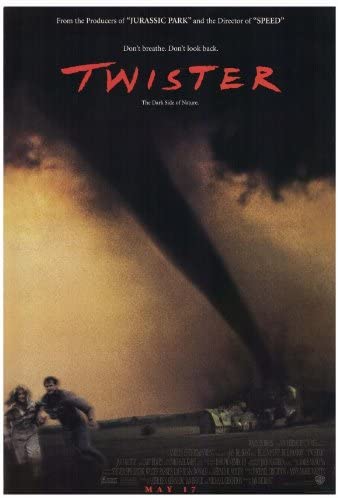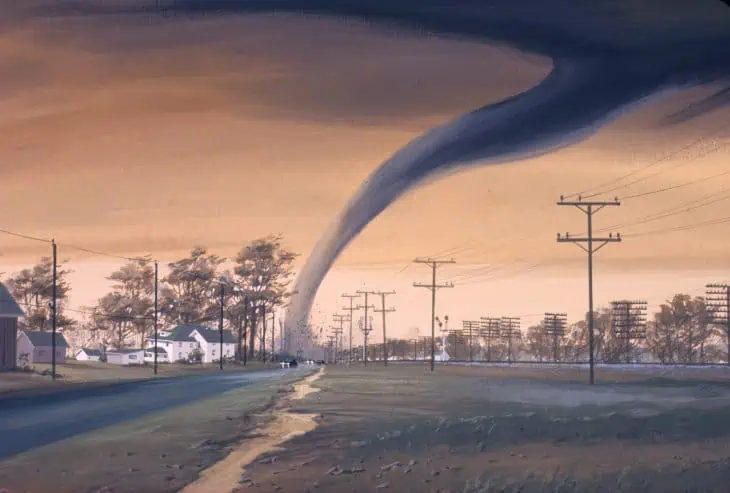
A tornado is one of the most devastating natural disasters on Earth. With its strong winds, it can destroy homes and establishments in an instant. It can even smash bridges and trains, overturn vehicles, uproot trees, or engulf water from a riverbed. When it hits, it may last for a few seconds or as long as three hours. Freaky tornado facts, indeed!
How to spot a tornado? Once you see the sky turn green or greenish-black, you better start running because a tornado is very likely to touch down in your immediate area. Begin by taking shelter in the lowest possible level and staying away from windows. Wear a helmet or bike helmet to protect your head, and put on a good pair of shoes. Now is not the time to go barefoot! Tornadoes carry objects only to eject them haphazardly. Shoes will protect your feet from nails, broken glass, and other forms of debris. One must never underestimate a tornado because it has taken thousands of lives! The desolation of a tornado is something you don’t want to experience.
In the article below, we share 50 of the most powerful tornado facts – how they are formed, what to do when you see one, some of the most powerful tornados in history. It’s better to be prepared by knowing these facts!
- 01The United States experience approximately 1,200 tornadoes annually.
- 02Texas gets the brunt of tornadoes – about 120 tornadoes yearly.
- 03Common tornadoes have a speed of lower than 110 miles per hour or 180 kilometers per hour.
- 04They span 250 feet or 80 meters across.
- 05It may last for a few seconds or up to 3 hours when it hits the ground.
- 01Tornadoes are formed when cold, humid air strikes hot, warm air.
- 02A tornado is also called a twister or cyclone.
- 03It is a rapid and violent pressure of air.
- 04Tornadoes can strike in an instant.
- 05Tornadoes are extremely dangerous.
- 06Tornadoes are detected with the use of the Pulse-Doppler radar.
- 07They may appear in different shapes and sizes.
- 08Tornadoes occurs around the world.
- 09They are often accompanied by thunderstorms.
- 10Tornadoes begin as thunderstorms called supercell storms.
- 01The safest places to hide during a tornado are basements, ground floor bathtubs, and under staircases.
- 02Tornadoes may happen any time of the year but most tornadoes occur in the afternoon.
- 03Tornadoes can turn to white or blue while traveling in the body of water.
- 04In the northern hemisphere, tornadoes rotate counterclockwise.
- 05Lightning is a factor in the appearance of a tornado.
Ted Fujita introduced the Fujita scale.
In 1971, the Japanese-American meteorologist Tetsuya Theodore Fujita introduced the Fujita scale. It is a device that measures the intensity of a tornado based on wind speed and the damage the tornado creates. The scale has six divisions, starting from F-0 to F-5. The most damaging on the scale is the F-5.
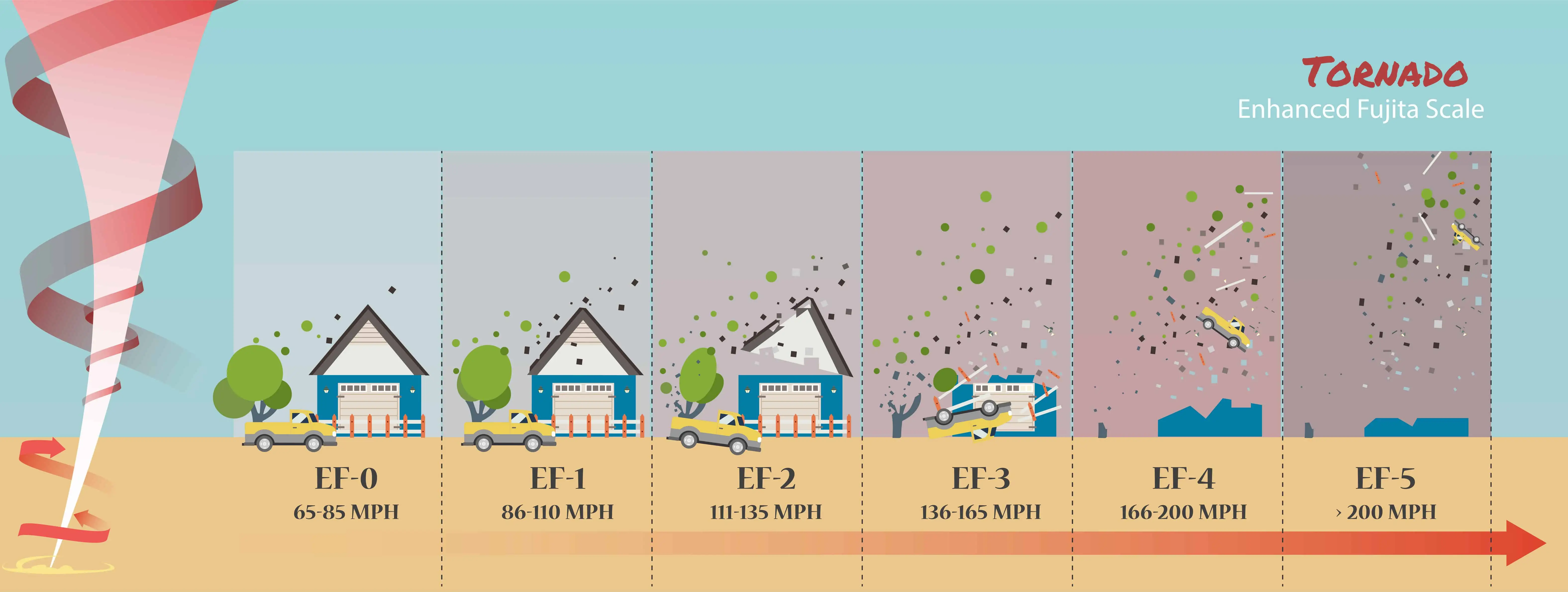
In the United States, tornado season is from April to June.
According to experts, the tornado season in the United States is from April to June. Most tornadoes occur in the month of May, while April has the strongest tornadoes. The highest number of tornadoes happen in June.
A tornado outbreak consists of multiple cyclones.
A tornado outbreak is the appearance of several twisters over an area, usually due to thunderstorms. The number of cyclones in an outbreak is between six to ten. This outbreak happens within the same day and can continue until the next morning.
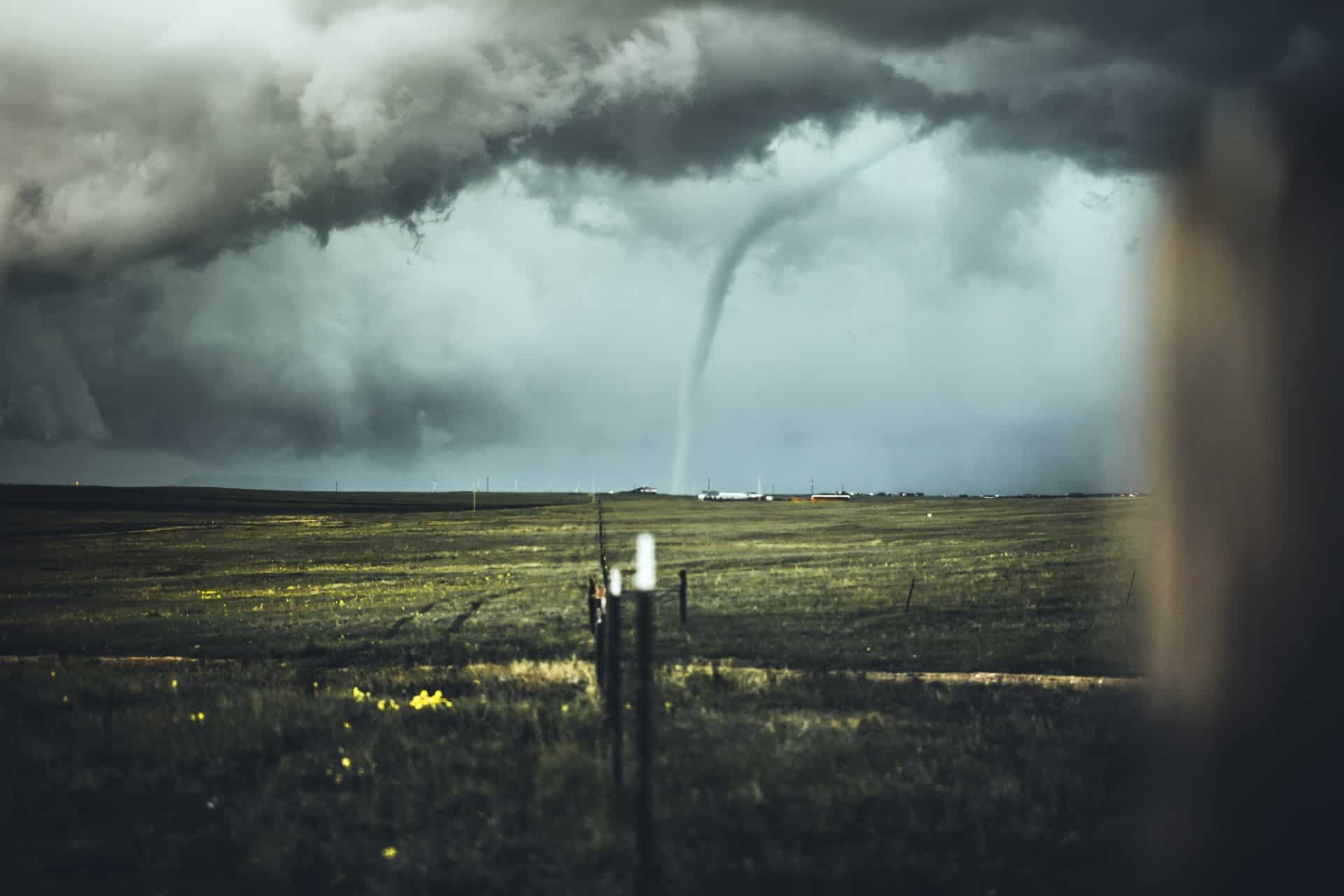
The Tri-State tornado was the deadliest twister in the United States.
Tri-State was the worst tornado that occurred in different parts of Illinois, Indiana, and Missouri on March 18, 1925. It was in the F-5 category on Fujita Scale, although cyclones were not yet ranked during that time. The cyclone had the fastest speed at 73 meters per hour, or 117 kilometers per hour, and lasted for 3 1/2 hours. It resulted in 685 fatalities.
Daulatpur–Saturia tornado was the worst in Bangladesh.
The Daulatpur-Saturia tornado that devastated Bangladesh on April 26, 1989, was the deadliest cyclone in the country. It killed about 1,300 people and injured 12,000. Furthermore, it caused extensive damage by uprooting countless trees and wiping out houses within the range of its path.
2011 Super Outbreak is the most extensive and detrimental twister in the US.
In April 2011, the deadliest and largest tornado, the Super Outbreak wreaked havoc in the Northeastern, Midwestern, and the Southern United States. The Super Outbreak had a total of 360 tornadoes; four of them with a scale of F-5. In total, 348 persons were killed. In Alabama alone, 238 related fatalities and about $10 million in damages were recorded.
The tornado alert is no longer used.
Back in the day, weather forecasting agencies issue a tornado warning to the public if a funnel cloud or rotating wind is spotted. When this happens, a tornado siren may be heard in the area. However, as of today, the tornado alert is no longer used. Instead, the Doppler Weather Radar, a device that can measure how fast the rain or hail moves, is utilized as it’s more reliable or accurate.
Tornado watch is a warning for severe thunderstorms.
A tornado watch is issued to alert the public that there is a possible occurrence of severe thunderstorms which may lead to tornadoes. Moreover, a tornado watch is released in wider areas where the development of twisters exists.
Rope tornadoes are the most common.
Rope tornado got its name from its rope-like appearance. It is also the smallest and most common twister. Most cyclones begin and end as rope tornadoes. Some only last for a few minutes, maintaining their rope-like appearance as they hit the ground.
A cone tornado has a wider base.
Cone tornado has a broader base and gets narrower as the rotating wind or funnel hits the ground. It also gets its name from its conoid appearance. Compared to a rope tornado, the cone tornado can cause more harrowing damages.
The wedge tornado is the most destructive.
A wedge tornado is broader and wider than its height. It’s one of the largest and most destructive cyclones. This is usually under the F-3 category. With a width of more than half a mile, it can leave a trail of destruction.
A waterspout tornado is formed over a body of water.
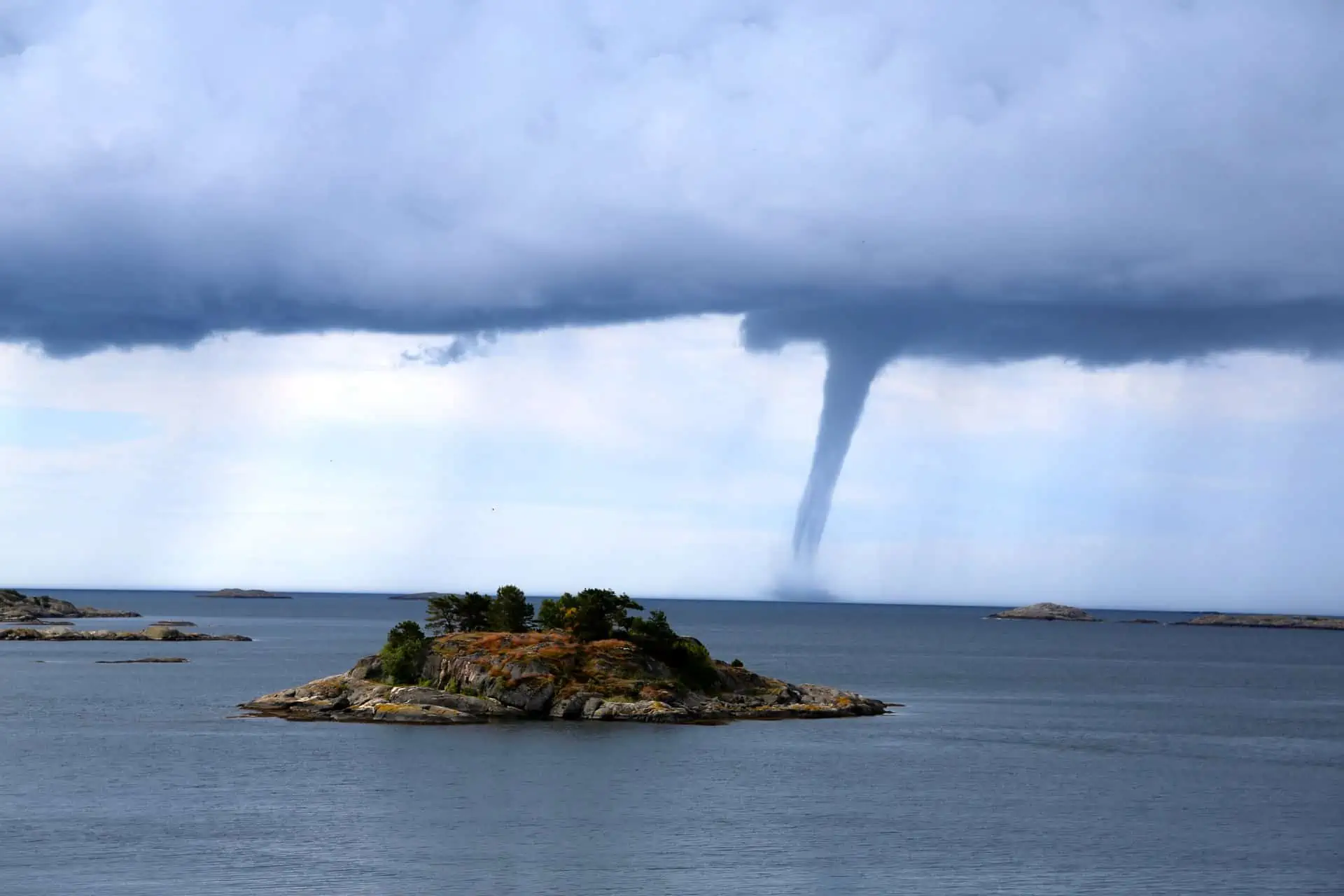
A waterspout tornado or “over the water tornado” is a whirling pressure of water and air. It is accompanied by strong winds, turbulent waves, and dangerous lightning strikes. Waterspout tornados are very comparable to land tornadoes. Apart from the lighting and strong winds, the waterspout tornados can also bring hail.
The multiple-vortex tornado has multiple funnel clouds.
The multiple-vortex tornado has several vortices or whirlwinds rotating around a single storm. This can be extremely destructive. It was one of the cyclones that hit Oklahoma on 2011 , and is placed under the F-3 scale. It had winds of up to 165 mph that caused the demise of two people.
A tornado sounds like a rumble.
A tornado’s sound depends on several things like its size, strength, what it’s hitting, and proximity to human ears. However, the most common sound of a tornado is a continuous rumble or roar akin to a nearby engine or a waterfall. When a tornado hits and tears through a city, it creates different sounds which are difficult to recognize because it is deafeningly loud.
Tornadoes and hurricanes might look alike but they are different in many ways.
They both create whirling winds. Even so, hurricanes have high winds, heavy rain over a specific area and can travel over a hundred miles. Hurricanes last for days or even weeks while tornadoes last for a few hours or just minutes. Their wind scales also differ, a Category 1 hurricane produces a sustained wind of 74 to 95 miles per hour, on the other hand, an F-1 tornado has wind gusts of 65 miles per hour to 85 miles per hour.
Change in the clouds and color of the sky are certain signs of a tornado.
Changes in how the clouds move and the colors of the sky are good indicators that a tornado is occurring. The sky may turn a tint of green or blue. This is the result of sunlight reflecting from hailstones. The sky may also look extremely dark during the daytime right before tornadoes happen.
Be mindful of twisting dust or debris.
Tornadoes suck objects and throw them miles away. Noticing whirling dust or small objects from the sky is a warning sign that a tornado will transpire. Though not all twisters have a funnel-like form, swirling is a symbol of an occurring tornado and moving earthward from the clouds.
Most tornadoes in the United States occur in Tornado Alley.
Tornado Alley is a term used to refer to states in which a high number of cyclones occur every year. The word was first used in 1952. Although the boundaries of Tornado Alley are not clearly identified, it covers northern Texas, Oklahoma, Nebraska, Louisiana, Kansas, Iowa, and South Dakota. Tornadoes in this area usually happen in late spring, and sometimes in early fall. These are tornado facts you need to know if you live or planning to move to these states.
Shoes and helmets can save you from tornadoes.
Always prepare for the worst. Wearing shoes and a helmet in a tornado can lessen or ultimately prevent serious injuries. Shoes will protect the feet from riddled nails, broken glass, and splintered woods. A bike helmet or any type of helmet can protect heads from life-threatening head trauma caused by flying debris.
The National Weather Service's task is to provide weather forecasts.
The National Weather Service is an agency from the United States tasked to give warnings on hazardous weather, weather forecasts, safety and protection from harsh weather, and other general information. Originally, the agency was called the United States Weather Bureau but adopted its current name in 1970. It is situated in Silver Spring, Maryland, United States Of America.
Cumulonimbus clouds are thunderstorm clouds.

Cumulonimbus clouds are thick, towering clouds. These clouds extend up to thousands of meters, creating thunderstorms and releasing heat or energy to the surrounding air. They are called thunderstorm clouds because they are associated with lightning and thunder, heavy rain, snow, hail, and even tornadoes. Strong winds can flatten the top of the clouds into a mushroom-like appearance.
Most storm chasers are meteorologists.
While most people run away from different types of storms, storm chasers run near them. Storm chasers are people who analyze and predict weather patterns. They use different types of equipment to study and accurately pinpoint a weather disturbance.
Timothy Michael Samaras was one of the best-known storm chasers.
The American engineer and storm chaser Timothy Michael Samaras was known for his field research on tornadoes. He was the founder of a research team called Tactical Weather Instrumented Sampling In Tornadoes Experiment (TWISTEX), which aims to learn more about tornadoes. In an unfortunate and ironic twist of fate, Samaras, his son Paul, and a team member were killed when a tornado hit their car in the spring of 2013.
Canada is ranked 2nd in the world with the most tornadoes per year.
Canada takes the 2nd spot with the highest number of tornadoes annually. Approximately, 80 confirmed and unconfirmed twisters occur in Canada yearly. Most of these tornadoes happen in Southern Quebec, Southern Ontario, and Canadian Prairies and are usually under F-0 to F-2 categories, resulting in minor damage.
The 1999 Bridge Creek–Moore tornado has the highest recorded wind speed.
The 1999 Bridge Creek-Moore tornado was an outstandingly powerful F-5 tornado with a high speed of 301 ± 20 miles per hour or 484 ± 32 kilometers per hour. The tornado struck Grady County, Oklahoma, at 6:23 pm on May 3, 1999. The disaster lasted for about 80 minutes and left massive destruction.
Tornadoes hit Codell, Kansas in three consecutive years. All of them happened on May 20th.
Unbelievable tornado facts! Kansas was hit by a tornado for three consecutive years, all on May 20. In 1916, an F-2 tornado passed through Codell in the early evening. In 1917, an F-3 twister struck the same western portion of Codell. Finally, in 1918, just before nightfall, an F-4 tornado visited Codell.
Storm Prediction Center's task is to forecast the risk of thunderstorms and tornadoes.
The mission of the Storm Prediction Center or SPC is to provide timely and reliable weather forecasts and warnings against dreadful thunderstorms and tornadoes in the states of America. The agency is located in Norman, Oklahoma. SPC closely monitors locations in which tornadoes are more likely to occur. They release convective outlooks which are reports containing the areas where thunderstorms are possible to occur, up to 5 times a day.
Mountains are not safe from tornadoes.
Contrary to popular belief, tornadoes can also pass through mountains or mountain ranges. Although, it is true that tornadoes rarely occur in mountainous areas because the air is cooler and more stable in these locations.
Approximately 2% of tornadoes are under the F-4 to F-5 categories.
Just a few tornadoes or about 2% of tornadoes are considered violent or are under F-4 to F-5 categories. However, these types of tornadoes may result in around 65% of deaths. In several cases, a violent tornado has a core diameter of more than 0.5 kilometers or 0.3-miles.
The movie Twister is about a tornado outbreak in Oklahoma.
The 1996 American disaster-adventure movie Twister was about a group of storm chasers attempting to use a piece of research equipment during a tornado outbreak in Oklahoma. The film was the 2nd highest-grossing film in 1996, with an average of 54.7 million tickets sold in the USA. While the movie received criticism for its story and scientific accuracy, it was widely appreciated for its sound design and visual effects.
Was this page helpful?
Our commitment to delivering trustworthy and engaging content is at the heart of what we do. Each fact on our site is contributed by real users like you, bringing a wealth of diverse insights and information. To ensure the highest standards of accuracy and reliability, our dedicated editors meticulously review each submission. This process guarantees that the facts we share are not only fascinating but also credible. Trust in our commitment to quality and authenticity as you explore and learn with us.



